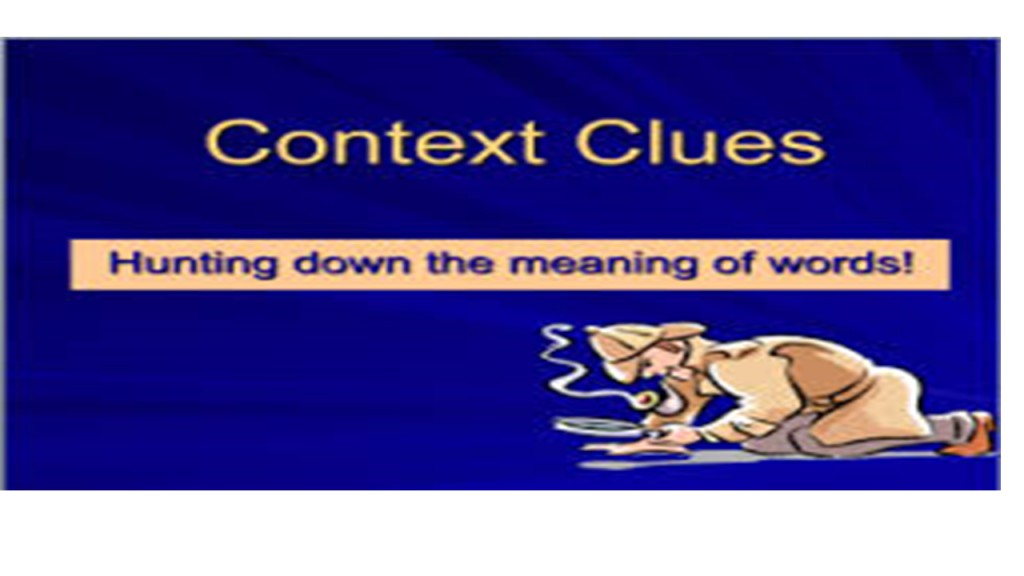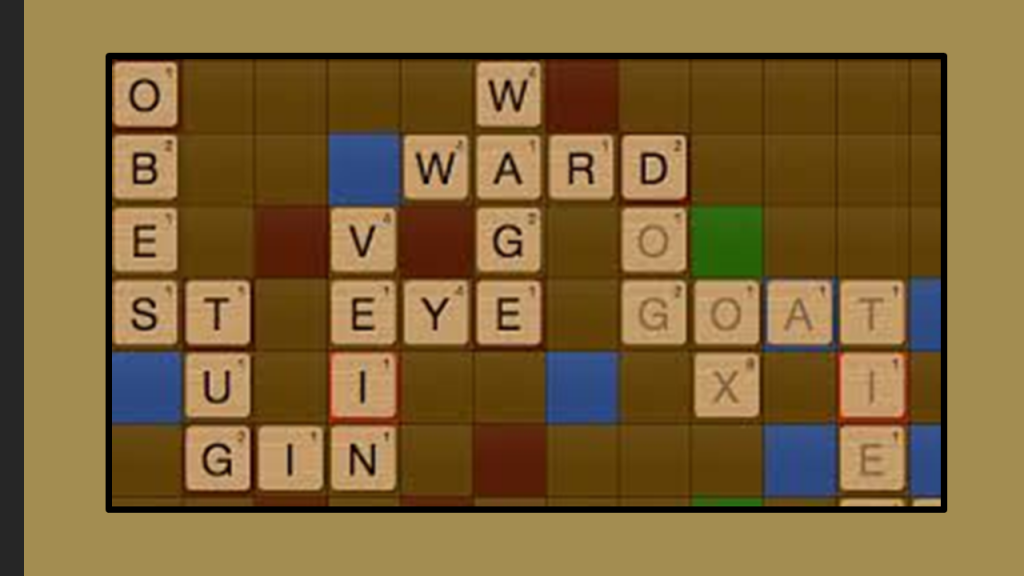Part 5: Teaching Cognates to English Learner Students

When it comes to English Language Learners, it is critical that students have the opportunity to see their native language as an asset. Particularly for native Spanish speakers, a way to do that is to help them understand the sheer amount of academic vocabulary they have at their disposal through the use of cognates. Teaching students to leverage their native language to their advantage by looking for cognates is incredibly powerful due to a number of factors. One of those factors is the nature of these cognates themselves. Many of the cognates in Spanish seem to be high use words that cross domains (Reading, Science, Math, etc.). For example, matemáticas and mathematics are cognates in Spanish. The fact that these are “high utility” words only strengthens the power of instruction with them because of the the impact of multiple exposure to a specific set of words and student acquisition of the “layers” of meaning a given word might have. One strategy to do this is to following the process below: Teach students what cognates are – “words that mean just about the same thing in English as in your native language”. Have students look at for words that might be cognates in authentic texts Have the students answer the following questions about the word What is the English word and what is the native language equivalent? Does the word mean about the same thing in both languages? Do the words sound alike? Do the words look alike? Are the two words cognates? Why or why not? Are there any parts of the word that are not the same? While this strategy above is not fool-proof, it does begin to help students see how to pull from their native language knowledge in order to have access to a larger bank of words, concepts, and background knowledge which can only help. If you have questions about cognate instruction, please don’t hesitate to leave your question below. Additionally, if there is an additional topic that you would like to see posted or additional ways that you engage your students to invest in word learning, please comment below. Or you can email us at tajulearning@gmail.com.
Part 4: Prefixes and Suffixes

Over the last few weeks, we have looked at the different strategies for improving students’ ability to acquire new vocabulary words. Teaching prefixes and suffixes (together known as affixes) is just one more strategy teachers can provide to students in order to help them infer the meaning of unknown words that are encountered as they read every day. While teaching affixes is a great morphemic clue to leverage (by that, I mean any meaningful part of the word), it is important to know that it is not the only one. Other morphemic clues that students can leverage include: Compound words Derivational suffixes Word parts For today, however, we will focus on how you can teach students to use affix clues in a word, without spending a month having them memorize prefixes and suffixes which will undoubtedly impact the personal investment, consciousness, and enjoyment of words that is at the center of effective vocabulary instruction. In order to leverage the “minds-on” type of engagement that students need to truly and deeply acquire vocabulary, you can follow the strategy below which combines explicit instruction with student ownership. When students come to a word they don’t know that may contain a prefix/suffix, STOP First remove the prefix/suffix from the rest of the word See if there is a real word left Have students collaboratively come to an understanding of what the prefix/suffix means on their own Combine the meaning of the prefix with the meaning of the remaining word Use the replacement strategy by putting the new meaning in the sentence to see if it makes sense A few closing thoughts. This work is intended to extend throughout the span of the year. It is not a unit that you teach and lay to rest. Rather a strategy that students continue to refine and practice over longer periods of time with continuous feedback. Part of that feedback can lie in how students transfer the knowledge gained from this work to other areas of the school day and life. For example, are you seeing the use of these prefixes and suffixes in their writing, when they encounter these similar word patterns in their Science books, when the same prefixes are attached to terms in Math? Finally, as with all areas of teaching, motivation and engagement is the key. Students need to see the value, personal success, and benefit of learning not only the strategies but investing in this level of mental rigor. To that end, continue to leverage the ideas offered in part 1, Word Consciousness, and part 2, Word Play. If there are additional ways that you motivate and engage your students to invest in word learning, please comment below. Or you can email us at tajulearning@gmail.com. ***For a complete look at how to teach prefixes and suffixes, look at our resource titled, Inside Word Clues– A Common Core Aligned Unit for teaching affixes, compounds, derivational endings and more.
Part 3 – Strategies for Learning Unknown Words

Yes, students need access to a large bank of words in order to be successful readers. But they also need to be able to process and analyze new words for meaning as they encounter them. Without this skill, readers miss important parts of text that hinders their ability to make meaning. These “word learning strategies” generally fall into two categories. The first category is “inside” the word clues (from here on out referred to as inside strategies). These clues come from the morphemic analysis of the word itself. The second category is “outside” the word clues (from here on out referred to as outside strategies. These clues come from the contextual analysis of the surrounding text and text features of a passage. When teaching inside strategies, teachers have the opportunity to show students that we can find meaning in a word by looking at its important parts. Students do so by looking at root words, base words, affixes, inflectional endings, and chunking. When teaching inside strategies to ELL’s and struggling learners, consider including these critical pieces as part of direct instruction. Know that gradual release (teacher modeling, shared practice, guided practice, independent practice and application) of this skill is necessary for effective implementation by students. Look to see if there is any word chunk that you recognize (either base, root, or other high frequency word you know). Take apart the word into any bases or roots and their affixes. Find meaning from those word parts that you’ve taken apart. Rebuild that word using the meaning you’ve gleaned from each important part. When teaching outside strategies it is important to help students see syntactic and semantic clues provided by surrounding words and phrases. Syntax is a fancy way of talking about the rules that form our grammar structure and the patterns that we find in sentences (e.g. if you see a subject first, you know that a verb must follow). Semantics simply means, meaning or an interpretation of its meaning. Therefore, outside strategies really help students understand how to use what they know about English and the meaning of the surrounding text to make educated guesses about what a word means. When teaching outside strategies to ELL’s and struggling learners, it is important to include the following components as part of the process for increasing vocabulary development. Teach students that writers use specific clues to the meaning of challenging words in the text. Deliver explicit instruction that includes modeling and examples of the various types of context clues (i.e. definition, synonym, antonym, example, and general). Provide guided practice in using context clues with authentic and appropriately challenging texts. Now, I know that we have simplified this process greatly. However, if you are interested in what these two approaches might look like, please take a look at our products Context Clues and Text Clues. Both of these common core aligned resources provide student reference sheets, anchor charts, activities, and explicit examples for teaching inside and outside word clues. And, as always, if you have any questions or comments, don’t hesitate to send us a message. By: Alexandra Guilamo
Vocabulary Instruction: Part 2/6 Word Play for Teachers of English Learners and Struggling Students

In part 1 of this series we talked about word consciousness being whether students grasped that words are the currency of the English language and whether they “bought into” reason why words are essential. We offered a number of strategies to achieve this: from having a word-rich environment, time for metacognition, student choice, and student ownership. While these elements are critical, none is more critical than the general affect students have towards word learning. What does this mean? Affect is the general feeling and emotions that students have toward vocabulary instruction and word learning. The reality is that we now understand that vocabulary instruction must be more an act of metacognition than anything else. However, to get students to think about what they know, how they know it, and to extend that knowledge to other examples, students have to “feel like it”, or have the desire and the positive affect towards the activity and the level of thinking required to complete it. In the Danielson Framework for teaching, she talks about this as the culture for learning – “the classroom culture is a cognitively busy place characterized by a shared belief in the importance of learning…” Vocabulary instruction, arguably, must leverage this culture for learning piece more than ever. Yet, vocabulary instruction has not traditionally been an activity that lead teachers or students to jump for joy. There seems to be an unspoken sentencing and submission to word work and vocabulary development being boring. And everyone seems to be at a loss to change this course thinking. So what will it take to create a fun, “cognitively busy place” where kids have “bought into” the significance of words and their identities as readers of words? One place to start is games. We all love to play games, and some games seem to bring a sense of nostalgia, ease, joy, and willingness to all who partake. By tweaking the nature of a number of classics and adding simple questions like: “how do you know”, “what’s another example that shows the same pattern”, “what is a right time and a wrong time to use this word”, etc., you can create a fun and metacognitively busy place where students are begging to have to time to play with words. So what are some games that lend themselves to targeted vocabulary and positive affect and culture? Word pattern tic tac toe Synonym or antonym dominoes Vocabu-nopoly (vocabulary monopoly) Hang-man Pictionary Charades Scrabble Word hunts (not word searches) Go fish with definitions or synonyms Word pattern or word meaning Bingo If you are looking for more ideas on word work games, or you’d like to see how these games might help your classroom, take a look at our 30 Ready-Made Games for Vocabulary Development (in English and Spanish) in the product section of our website. Author: Alexandra Guilamo TaJu Educational Solutions Provider
Vocabulary Instruction: Part 1 – Building Word Consciousness for ELs and Struggling Students

“Word consciousness – and especially understanding the power of word choice – is essential for sustained vocabulary growth. Words are the currency of written language. Learning new words is an investment, and students will make the required investment to the extent that they believe that the investment is worthwhile.” Judith Scott and William Nagy. Because of the fact that words are the “currency” of the written language, word consciousness, although a relatively new concept, is critical to its successful application. Word consciousness involves two critical components. The first is an appreciation of the currency. Do students value new and vivid words, do they notice and appreciate descriptive language, do they stop and think about word choice in texts they read and in their own writing, etc? The second aspect of word consciousness is the idea that this awareness of and interest in words will lead students to the ability to know a word to the extent that they will have the desire to play with its meaning and apply it flexibly and accurately. It means that they will be invested enough to know a word truly in order to apply that knowledge anywhere at any time. This is an immense task. But at the center of this challenge is the question of whether or not students even know “why words are important”. It is not enough for the adults who teach them to merely tell students about the power of this currency. Rather, students must appreciate the importance of words and their use for themselves. They must first have a sense of gratefulness for the way words can make a person feel and the things words can do beyond the page before they can be asked to invest so fully in the tasks of awareness and investment in this currency. So what are some quick ways that can teachers build word consciousness in their classrooms? • Let students lead and own how they define the importance of words and their use. • Be interested in words yourself. Research has shown that when adults notice new words and get excited, that pattern of excitement is continued by the students who see this model. • Have a word-rich classroom where students’ exposure to vocabulary. Students should be surrounded by words and books and motivated to learn the words within them. • A safe environment where students feel comfortable trying out new words and talking about that choice is critical. • Students become more engage with words when they have the opportunity to play games, puzzles, and take part in activities that allow them word choice. • Give students choice. Self-direction is a powerful motivator for many activities, but even more so for the development of affect towards new words. • Students must have intentionally planned time to engage in metacognitive discussions about word meaning interpretations, word parts, and other conceptual knowledge that will help them transfer the words to different contexts. • Gradient activities allow students to see and play with relationships of “degree” between similar words with connotations such as angry and livid while leveraging nonlinguistic representations.
Vocabulary Instruction: A 6 Part Series for Teachers of English Learners and Struggling Students

Looking back on my years as a classroom teacher, I now wonder if I did enough to boost students’ vocabulary, their ability to manipulate word parts, their curiosity of the words chosen by an author, and their overall love of words. I know the answer is no. This is in large part to the fact that I didn’t know half of what I do now about vocabulary instruction and development. As a younger teacher, I also did not appreciate the necessity of high quality practice that led to deep word meaning as part of a high quality literacy program. I thought I was a great Reading teacher without being a great word teacher. However, after years of research and practice, there are a number of truths that have emerged. In the upcoming weeks, we will take a look at these “truths” about vocabulary instruction. These truths are based on educational research findings around vocabulary development and the elements of best practice literacy instruction. The hope is that this series will give you new insight, new resources, new ideas, and a plethora of instructional strategies to try out in your classrooms. As we dive into this work of expanding students’ knowledge of and consciousness towards words, please know that it will be messy. All great learning is. But I encourage you to share both your successful and failing lessons, so that as a community, we can learn from one another. The topic of the next 6 Sunday posts are: • 1/6 – Word Consciousness • 2/6 – Word Play • 3/6 – Strategies for Learning Unknown Words • 4/6 – Prefixes and Suffixes • 5/6 – Cognates • 6/6 – The Language of the Common Core If there is an additional topic that you would like to see posted, please do not hesitate to reach out to us at tajulearning@gmail.com and we’ll will be sure to include it.
“Honoring Differences to Help Students Thrive”
We are all different. Some of us are short, others are great readers, some are into sports, and others where glasses. There is no right or wrong, good or bad. Our differences are what make us unique. These differences create the possibility of existing in an amazing world where we are able to share skills, gifts, and intelligences. We need differences in the world. It is what gives life color.
The classroom is no different, rather a smaller version of our everyday reality. Teachers working especially with English Language Learners can create an environment where their language learners thrive by helping them to understand that their differences are precisely what are needed in order for us all to be successful. But teachers must remember that just like any amazing lesson, this environment must be carefully planned and fostered. And the first few weeks of school are critical to the classroom culture’s success.
